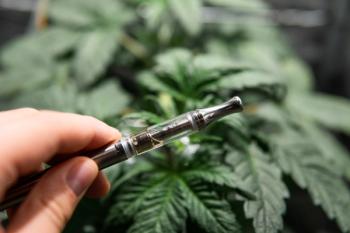
Cannabis Science and Technology
- July/August 2021
- Volume 4
- Issue 6
Harnessing the Power of Data in Extraction and Refinement of Cannabis, Part II

A review of the post-processing and refinement steps of producing cannabis extract and how data collected during the extraction and refinement phase can translate into higher profit margins.
In Part II of this series, we review the post-processing and refinement steps of producing cannabis extract and how data collected during the extraction and refinement phase can translate into higher profit margins.
In Part I of this series (1), key steps and data collection points during extraction were covered to emphasize the value of accurate data and analysis. Processing of cannabis, from extraction to end product, has a wide and diverse range of process steps. In order to understand production efficiency, consistency, and opportunities for improvement, each of these steps needs to be evaluated on a regular basis. As cannabis processing continues to scale up and margins slim, it is vital to make data driven decisions for the benefit of the organization. With data, better decisions can be made to improve efficiency and open the door to increased profitability.
After extraction, the cannabis oil is categorized as “crude” or “raw.” This crude extract can be sold as-is for another processor to refine. However, usually the crude undergoes further processing to achieve a desired chemical profile, viscosity, or appearance for final product formulation. Figure 1 demonstrates general steps of cannabis extraction and refinement through a process flow diagram.
Crude extract can have a wide range of properties depending on the extraction method and quality of input materials. Some operators take advantage of the range of outcomes by running different extraction methods on starting material and producing a variety of end products or formulate a single product with different extracts and fractions. The refinement steps, referred to as “post-processing” steps, are intended to alter the crude extract. For example, post-processing can remove waxes, alter the color of the extract, increase cannabinoid potency, and more. At each of the post-processing steps, there are a few metrics that are important to understand efficiency, performance, and tracking accuracy. Figure 1 lists the main data points of interest, which include metrics such as weight, color, and record of the person responsible for that batch step. While there are fewer data points to evaluate within each step, there are still opportunities to utilize the data to understand areas of improvement.
The weight of the wax collected can demonstrate how extraction parameters or biomass source affects final yield or wax concentration. Either of these results can vary depending on how much wax was extracted. After evaluating a wealth of data, it is clear that cultivator, plant genetics, and cultivation method all impact the quantity of wax that the plant develops. For example, sungrown cannabis and hemp will generate about 30% more wax than indoor grown. Figure 2 displays the variance from cultivator to cultivator in addition to plant genetics.
The weight of the extract at the beginning and end of a process can reveal the average loss as a result of a process. For example, analysis of post-processing data could reveal a trend of significantly lower yields in products that have undergone the carbon treatment process. This should initiate a cost-benefit assessment of carbon treating a product and when it should be employed. Carbon treatment lightens the extract by exposing the ethanol-cannabis extract solution to activated carbon to filter out the chlorophyll and other colors. Tracking how the color changed and associating that with how much activated carbon was used, could be an opportunity for improving process efficiency and reducing use of expensive consumables.
Recording who was accountable for a specific process at a specific time is integral to evaluating employee performance with respect to laboratory operations and process steps. Trends can reflect if an employee should be coached or retrained if, for example, product quality, yield, or turnaround time strays from the team average. The time it takes to complete a task impacts the cost to produce a product. So, it’s important to be able to accurately account for this time in budgeting as well as production planning.
These metrics should be tracked and evaluated on a regular basis to promote data driven decision making and a culture of continuous process improvement. Manufacturers have had time to understand the bottlenecks within the extraction and refinement processes. The most common bottlenecks exist in the solvent removal step. So, manufacturers have designed technology to disrupt the industry’s bottlenecks. For example, falling film evaporators have been incorporated into processing operations to dramatically improve the solvent evaporation step after ethanol extraction or post-processing evaporation. Filtration technology from other industries is beginning to be applied to cannabis post-processing to separate waxes from cannabinoids and solvents. CO2 extraction technology has improved in recent months to incorporate innovation that will allow for dewaxing to occur within the CO2 extraction system itself. This technology will eliminate the need for the ethanol winterization, filtration, and rotary evaporation processes entirely. This reduces total processing time by well over 200%. Simultaneously, ethanol extraction system manufacturers are developing all-in-one continuous extraction equipment, which will allow for the entire extraction and refinement process to occur in one continuous system and continuously feed the unit for nonstop extraction operation. These types of innovation are important for cannabis and hemp operations to effectively scale-up and commercialize extraction methods and operations. The data that has been collected for each process will drive whether or not modified processes and system upgrades will generate a return on investment and when.
Operators using physical log books or traceability software to keep record of batch run metrics often sit on piles of raw data. Without time and resources dedicated to data analysis, the collection process becomes pointless. Without processes in place to filter, organize, and utilize raw data that come from automated processes, therein lies an overwhelming set of numbers with little to no meaning. Solutions will surface as organizations continue to scale-up and search for ways to optimize efficiency. Visualizing the efficiency trends that were mentioned above can support quick, data-driven decisions that will easily translate to higher margins and create value for the organization.
Reference
- L. Friesen, Cannabis Science and Technology 4(5),14–16 (2021).
About the Columnist
LO FRIESEN is the founder, CEO, and Chief Extractor of Heylo. With a background in chemistry and clinical research, Lo was inspired to explore cannabis as a medicine and to enter the emerging industry. She joined Eden Labs, a leading CO2 extraction equipment manufacturer to support and expand a Research and Development department. There she managed the development of their latest and greatest CO2 extraction system. In 2017, after working with Eden Labs and another cannabis processor, Lo launched Heylo with a mission to help people get more out of life with cannabis.
How to Cite this Article
L. Friesen, Cannabis Science and Technology 4(6), 14-16 (2021).
Articles in this issue
about 4 years ago
Cannabis is Medicine… Formulate it Like Medicine!about 4 years ago
Looking with Light: Understanding Spectrometryabout 4 years ago
The Separation of Several Minor Cannabinoids via Chiral HPLCNewsletter
Unlock the latest breakthroughs in cannabis science—subscribe now to get expert insights, research, and industry updates delivered to your inbox.



